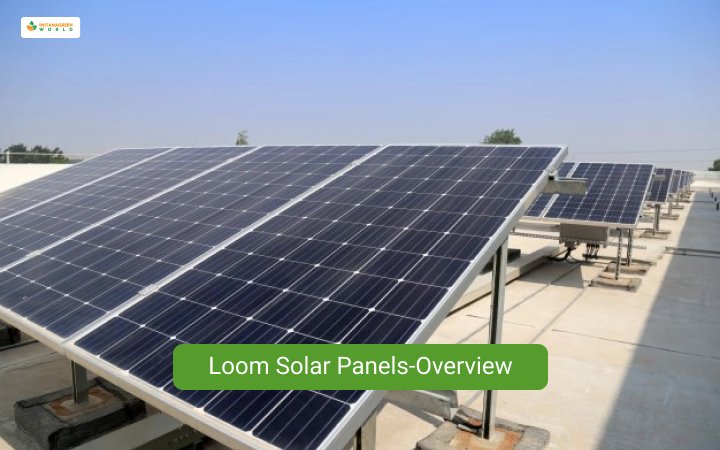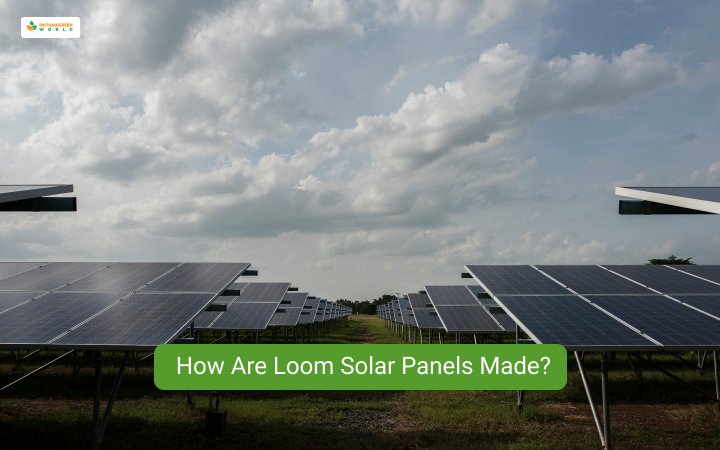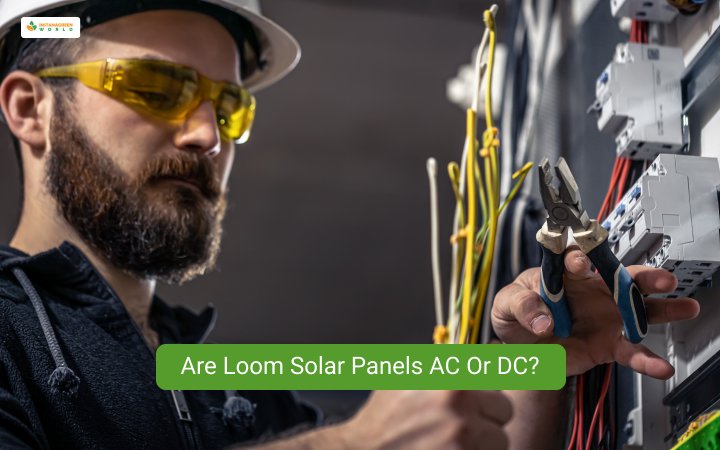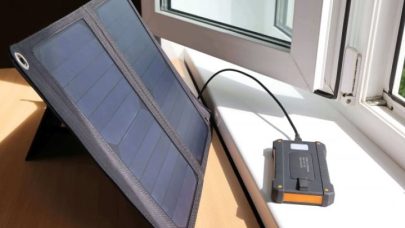Solar panels have gained immense popularity globally in the last few decades. India is also not lagging in the race, and the solar tech start-up Loom Solar has recently launched the Shark line of bifacial panels. These panels use sixth-generation mono PERC solar cells exclusively imported from Germany.
The loom solar panels are mainly designed for rooftop solar projects. Now, you may ask why you choose loom solar panels when so many other brands are available? Well, for starters, these are the most advanced solar panels that provide power conversion efficiencies of 20% to 21% and power outputs ranging from 440 W to 530 W. so, let’s find out all about these panels.
Loom Solar Panels-Overview
A solar panel is a device that captures sunlight and converts it into power and is put on a rooftop, pole, or the ground. It may appear to you as a simple gadget, but its construction is rather sophisticated.
The loom solar panels also need EVA, solar cells, a back sheet, glass, and a frame. Monosilicon, amorphous silicon, and polysilicon are some of the materials used to make loom solar panels.
It’s essentially a plate of cells with a high propensity for capturing light. The cells work together to capture and convert the maximum amount of solar radiation into electricity.
This super-efficient solar panel is linked to a solar inverter battery system, storing DC electricity and converting it to AC to power appliances. Loom solar panel price in India ranges from ₹40,000-₹54,000.
How Are Loom Solar Panels Made?
A single silicon crystal is used to make monocrystalline solar panels. They transform solar energy into solar electricity with high efficiency. As a result, solar panels are expensive. The new efficient solar panels of Loom Solar also cost ₹44,000. So, let’s look at the steps of making Loom Solar Panels.
Read More: How Much Power Does A Solar Panel Produce – A Complete Guide
Step 1: Converting silicon
To begin with, you must remember that converting sand to high-grade silicon is expensive. Moreover, it is a procedure that consumes a lot of energy. But, it’s the first step Loom Solar follows to make the solar panel everyone is bragging about.
Step 2: Making Ingots
Silicone is made out of solid rocks melted together at a very high temperature to create ingots. Ingots mostly come in the shape of a cylinder, but you can give them whatever form you like. First, the required structure is achieved by aligning all atoms. Later, boron is added, giving the silicone a positive polarity.
Step 3: Making Wafers
The fabrication of wafers is the next phase. First, the ingot is split into wafers, which are fragile discs. Next, loom Solar people use a wire for precision cutting. A wafer’s thickness should be comparable to that of a sheet of paper. To diminish reflection from the polished silicon surface, an anti-reflective coating is also applied.
Step 4: Converting The Wafer into Solar Cell
The next step is to turn a wafer into a functional solar cell that can convert solar energy into electricity. Wafers have metal conductors added to them, giving them a grid-like matrix. Rather than reflecting sunlight, the coating aids in its absorption.
To provide wafers with a negative polarity, a coating of phosphorous is diffused over them. This creates a positive-negative junction, which is necessary for a solar panel’s optimal operation.
Step 5: Using Metal Connections
Metal connections are used to link the cells together. For modest dwellings, 48 cell panels are recommended. The average size is 60-cell panels.
The front part of the solar panel is made of glass, while the rear is made of a sturdy substance. Then, a junction box is built to allow connections. The construction is then put together in a frame and sealed together with EVA adhesive.
Loom Solar Panels Installation
- Bury a Tube and run the cables through it to safeguard the wiring. Then, to support solar panels, construct a concrete platform. Solar panels can be mounted on the roof, on the ground, or on a pole.
- Once a platform has been built, you can construct an array using the appropriate power solar panels. Then, to store the energy generated by the panels, attach the sealed batteries. Finally, a powerful inverter and a charge controller should be placed next to the usual electrical box in the garage.
- You should start mounting the front feet first, using angle brackets at the mounting positions. After that, square up the feet and secure them in place.
- Understand how to connect wires to control panels and ground them to avoid short circuits and malfunctions.
Are Loom Solar Panels Waterproof?
Some solar panels are waterproof, whereas some aren’t. If you know how to stall a solar panel on the rooftop, you know how much water logging poses a threat to these panels. Water clogging reduces the lifespan and efficiency of a solar panel.
A waterproof solar panel will survive for a long time and will maintain its performance. As a result, it is critical to protect solar panels from precipitation. When it comes to making solar panels waterproof, most solar experts recommend applying sealant.
But, if we talk about the Loom Solar Panels, you’ll be glad to know that it comes with a strong frame that helps the solar panel sustain in harsh weather. Also, if you buy the Loom Solar 440, you’ll see it comes with an IP 68 Junction technology box. That makes the solar panel even more waterproof.
Are Loom Solar Panels AC Or DC?
Loom Solar easily comes quickly into the top 10 solar manufacturers of India. Solar panels typically provide DC output, which is then converted to AC by the solar inverter linked to it.
However, AC solar panels in the market produce AC, and the electricity generated by these modules may be used immediately. The electricity is then fed into a junction box, which is linked to the appliances.
Loom Solar launched the first solar AC module in India in 2019. Since then, it has remained the talk of the town because their 3kW new high-efficiency solar panels use the world’s latest technologies to make these panels.
How Loom Solar Panels Store Energy?
In most cases, solar panels are coupled to a battery inverter system. The DC type of energy is stored in the battery. The solar inverter transforms it into AC power to make it useable.
Grid-tie loom solar inverters are not linked to batteries and are instead synced with the utility grid. A dual meter is used to measure current flow, and credits are recorded at the electric grid. There are also AC solar panels that may be used to power gadgets straight from the junction box.
FAQs:
1: How Are Loom Solar Panels Used?
Ans: Solar panels are often connected to an inverter battery system. However, Grid-tie solar inverters just connect to the solar inverter, not the battery. Then, the solar panels’ DC power is sent into the battery. Next, a solar charge controller manages and controls the charge. Finally, the electricity flows down from the battery to the inverter, transforming it to run AC appliances.
2: What Is The Cost Of a 1kW Solar Panel In India?
Ans: The 1kW loom solar panel can generate 5000 watts of electricity as long as it gets direct sunlight. It gives 8-10 hours of backup power supply in India’s 3-4 BHK houses when they have unannounced power outages. That’s why these solar panels are pretty expensive and cost ₹98,000.
3: Are Loom Solar Panels Good?
Ans: Loom solar panels are undoubtedly good because they can generate about 25 amperes of electricity when the sun is overhead. If you use it for one month, you will save approx 90% of the power cost. Moreover, their recent Shark-bifacial solar panels can save up to 30% of space on rooftops, so these solar panels are convenient for small-sized households.
Conclusion
India’s Loom Solar has recently launched its line of most efficient PV panels for rooftop projects. We have given a few reasons why you should choose Loom solar panels among all the other available panels on the market.
These panels are waterproof; they are AC solar panels, thereby cost-effective, and they also use the utility grid to store solar energy. Therefore, if you want to know more about them, you can ask us your questions in the comment box.
Read Also:



















